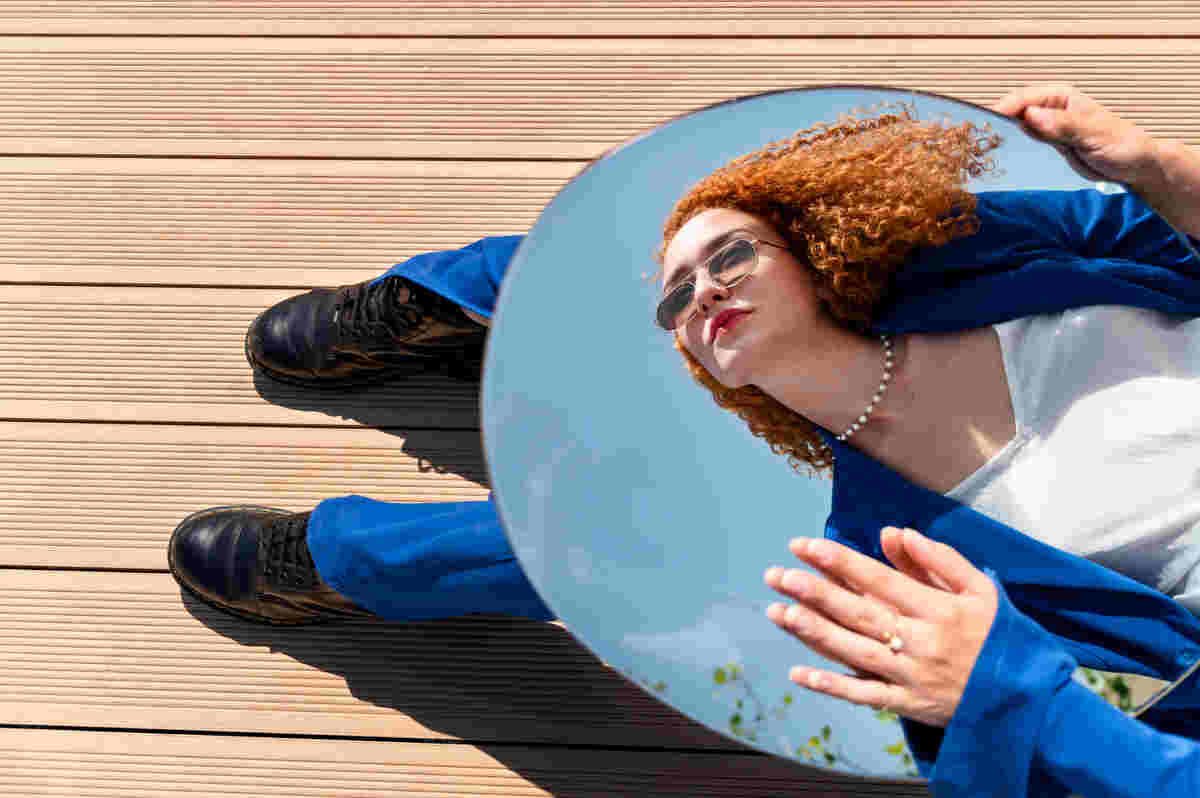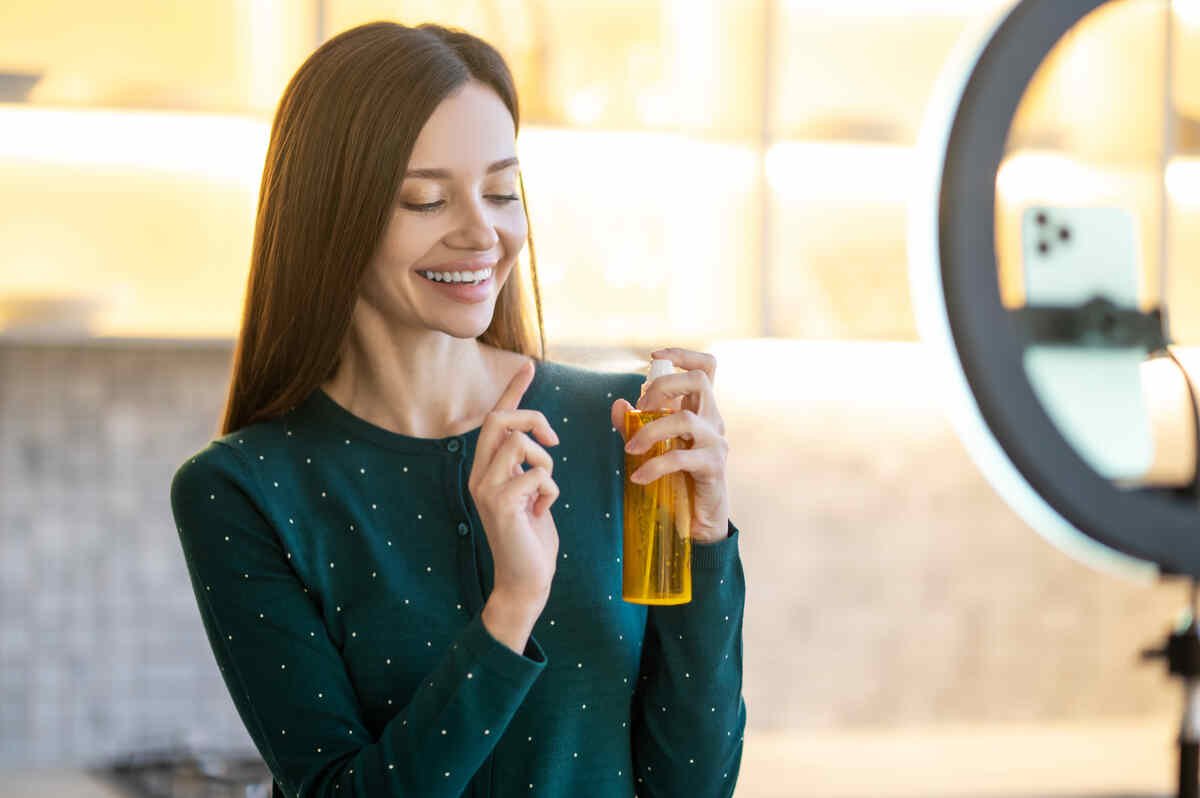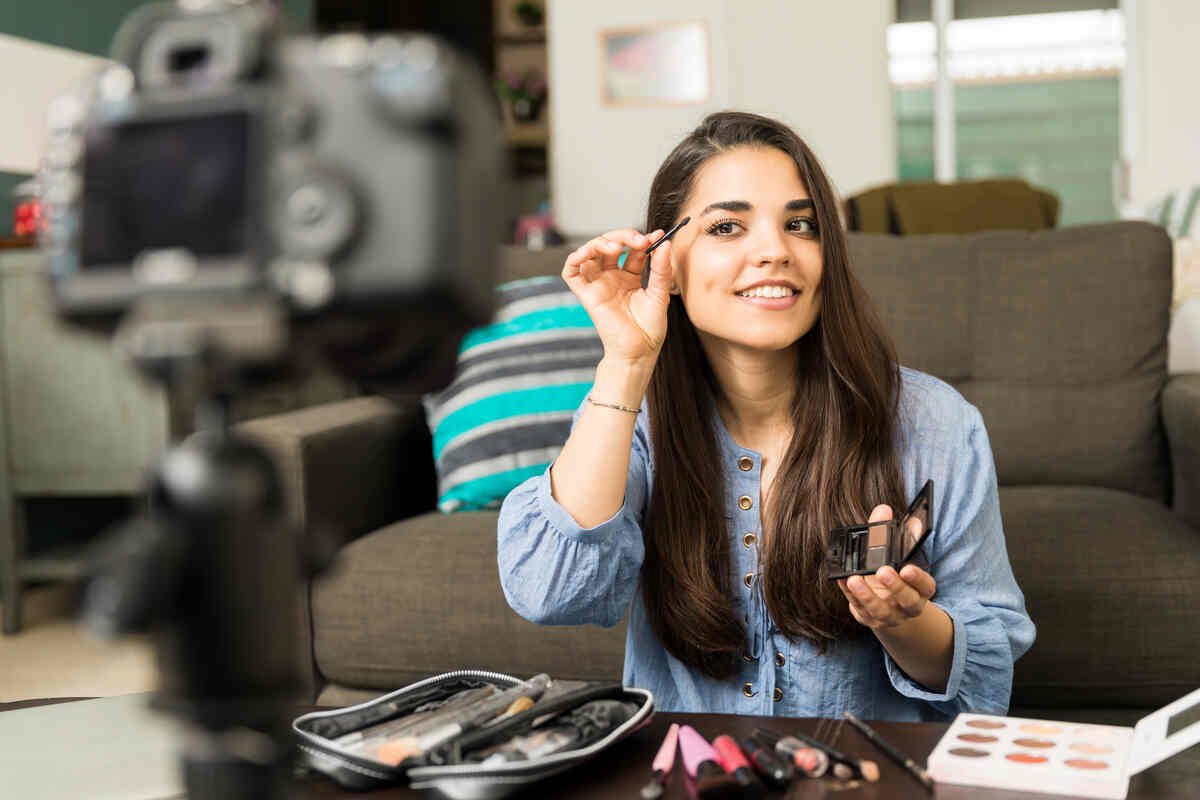
Introduction:
What fashion color should i dye my hair: Changing your hair color is a transformative experience, allowing you to express your personality and style in a unique way. If you’re contemplating the exciting journey of dyeing your hair, the question inevitably arises: “What fashion color should I choose?” In this guide, we’ll explore the factors influencing your decision and help you navigate the world of vibrant hues.
1. Understanding Your Undertones:
Understanding your undertones is a pivotal aspect of enhancing your personal style. Undertones refer to the subtle hues beneath the surface of your skin that significantly impact how colors interact with you. Essentially, there are three main categories of undertones: warm, cool, and neutral.
Individuals with warm undertones often display a yellow, peachy, or golden cast to their skin. This warmth harmonizes beautifully with earthy tones such as warm reds, yellows, oranges, and olive greens. On the contrary, cool undertones showcase a pink, blue, or purple tint. Those with cool undertones tend to shine in colors like blues, purples, pinks, and cool greens. It’s advisable to steer clear of warm yellows and earthy tones, as they may clash with cool undertones.
For those with neutral undertones, there exists a balance of both warm and cool tones, or their skin may appear more neutral beige. The versatility of neutral undertones allows individuals to experiment with a broad spectrum of colors, embracing both warm and cool shades with ease. By identifying your undertones, you can make more informed choices when selecting clothing, makeup, and accessories, ensuring that your overall aesthetic complements and enhances your natural features.
2. Trend Spotting:
Trend spotting is a dynamic process that involves staying attuned to the latest developments and shifts in various industries, from fashion and technology to lifestyle and culture. It goes beyond merely observing what’s popular at the moment; it requires a keen eye for emerging patterns and the ability to forecast what might capture widespread attention in the future.
In the realm of fashion, trend spotting involves recognizing the evolving preferences of consumers, tracking innovative designs, and identifying the influence of cultural and societal shifts on style. In technology, it entails keeping pace with advancements, such as breakthrough gadgets or transformative software that have the potential to reshape the way we live and work.
Being adept at trend spotting also extends to understanding shifts in consumer behavior, whether it’s in the way people shop, consume content, or interact with technology. Social media platforms, fashion runways, tech expos, and cultural events are often key arenas for trend spotters to observe and analyze the next big thing.
3. Considering Your Lifestyle:
Your daily routine and lifestyle should play a role in your hair color choice. Low-maintenance colors might be preferable for those with busy schedules, while others may embrace high-maintenance colors as a form of self-expression.
4. Consulting with a Professional:
Engaging in consultations with a professional is a strategic and valuable approach when seeking expert guidance or advice in a specific field. Whether it’s related to personal matters, career decisions, or specialized expertise, consulting with a professional can provide insights, solutions, and a structured path forward.
In areas such as career development, seeking advice from a career counselor or mentor can be instrumental. Professionals in this field can assess your skills, interests, and goals to offer tailored guidance, helping you make informed decisions about your career trajectory.
In the realm of finance, consulting with a financial advisor is a prudent step to take control of your financial well-being. These professionals can offer personalized strategies for budgeting, investing, and planning for the future, aligning their advice with your unique financial goals.
5. Expressing Individuality:
Expressing individuality is a powerful and enriching journey that involves showcasing your unique personality, beliefs, and interests in various aspects of life. It’s about embracing and celebrating what makes you distinctly you, fostering authenticity and self-discovery.
1. Personal Style: Embracing individuality often begins with personal style. Clothing choices, accessories, and overall fashion sense provide a canvas for self-expression. Whether you gravitate towards classic elegance, bold trends, or a mix of eclectic elements, your style becomes a visual representation of your personality.
2. Hobbies and Interests: Engaging in activities that genuinely interest you is another avenue for expressing individuality. Whether it’s a passion for art, sports, literature, or any other pursuit, dedicating time to what you love fosters a sense of fulfillment and uniqueness.
3. Thought and Perspective: Expressing individuality extends to your thoughts and perspectives. It involves articulating your ideas, opinions, and beliefs in a genuine and respectful manner. Embracing diverse viewpoints and valuing your own contribute to a rich tapestry of ideas in personal and professional settings.
4. Creativity and Innovation: Unleashing creativity and fostering innovation are powerful ways to express individuality. Whether it’s through artistic endeavors, problem-solving in the workplace, or creating something entirely new, tapping into your creative potential sets you apart and leaves a lasting impact.
5. Authentic Relationships: Building authentic connections with others is a key aspect of expressing individuality. Being true to yourself in relationships fosters genuine connections, as people appreciate and connect with authenticity. It allows for meaningful bonds built on shared values and understanding.
6. What fashion color should i dye my hair: Inspiration from Nature:
Finding inspiration in nature is a profound and enriching experience that transcends mere admiration of the outdoors. Nature serves as an endless source of creativity, teaching valuable lessons and offering a sense of tranquility.
The aesthetic wonders of nature, from the delicate intricacies of a flower petal to the vast landscapes of mountains and oceans, provide boundless inspiration for artists and designers. The harmonious color palettes, diverse textures, and organic forms found in nature often serve as a muse, guiding the creation of visually captivating and resonant artistic expressions.
7. Understanding Color Theory:
Understanding color theory is fundamental to various creative disciplines, including art, design, and fashion. It involves comprehending the principles of how colors interact with each other and how they can be combined to create visually appealing compositions. Color theory encompasses several key concepts:
1. Color Wheel: The color wheel is a fundamental tool in color theory, displaying the relationship between primary, secondary, and tertiary colors. Primary colors (red, blue, and yellow) are the foundation, and combining them produces secondary colors (orange, green, and purple). Tertiary colors result from mixing a primary color with a neighboring secondary color.
2. Color Harmony: Achieving color harmony involves combining colors in a way that is visually pleasing. Common color harmonies include complementary (opposite colors on the wheel), analogous (adjacent colors), and triadic (three evenly spaced colors). Understanding these harmonies enables artists and designers to create balanced and aesthetically pleasing compositions.
3. Warm and Cool Colors: Colors are often categorized as warm or cool. Warm colors (reds, oranges, yellows) evoke energy and vibrancy, while cool colors (blues, greens, purples) convey calmness and tranquility. Balancing warm and cool tones is crucial in creating a desired mood or atmosphere in visual compositions.
4. Color Contrast: Color contrast involves the juxtaposition of different colors to create emphasis and visual interest. High contrast, such as pairing complementary colors, can be attention-grabbing, while low contrast, like analogous colors, produces a more subtle effect.
5. Color Psychology: Colors have psychological associations and can evoke specific emotions or reactions. For example, blue is often associated with calmness and trust, while red may convey energy and passion. Understanding color psychology is essential in conveying intended messages and eliciting desired responses in various design contexts.
8. What fashion color should i dye my hair: The Impact of Social Media
The impact of social media on society is profound and multifaceted, reshaping how individuals connect, communicate, and consume information. With the rise of platforms like Facebook, Twitter, Instagram, and others, social media has become an integral part of daily life for millions around the globe. On one hand, it has facilitated unprecedented connectivity, allowing people to bridge geographical gaps, share experiences, and maintain relationships across borders. However, the pervasive nature of social media has also raised concerns about privacy, mental health, and the dissemination of misinformation. The influence of social media on shaping public opinion, trends, and even political landscapes is undeniable. Its ability to amplify voices, foster communities, and drive cultural movements has transformed the way information is disseminated and consumed. As society navigates the evolving landscape of social media, it becomes crucial to balance the benefits of connectivity with the challenges posed by issues like online toxicity and the manipulation of information, ensuring that these platforms contribute positively to the fabric of our interconnected world.
9. Maintaining Vibrancy:
Maintaining vibrancy in life is akin to tending to a flourishing garden, requiring consistent care and a commitment to nourishment. At its core, vibrancy encompasses a spectrum of elements, from personal well-being to professional pursuits and community engagement. Cultivating personal vibrancy involves a holistic approach, balancing physical health through exercise and nutrition. Nurturing mental well-being with mindfulness, and fostering emotional resilience.
In creative realms, sustaining vibrancy demands an openness to innovation, a willingness to explore new ideas, and an ongoing passion for self-expression. Vibrant relationships and communities, whether personal or professional, thrive on active participation, open communication, and a shared sense of purpose. Professionally, the maintenance of vibrancy entails continuous learning, adaptability to change, and a proactive pursuit of growth opportunities. Beyond the individual, connecting with the environment and cultural elements further contributes to a rich and dynamic life experience. In essence, maintaining vibrancy requires a deliberate and multifaceted effort, ensuring that the tapestry of one’s existence remains vivid, dynamic, and fulfilling.
10. What fashion color should i dye my hair: Color Psychology:
Color psychology explores the profound impact that colors can have on human emotions, behaviors, and perceptions. This interdisciplinary field recognizes that colors extend beyond mere visual aesthetics, influencing our psychological and physiological responses. Different colors evoke varied emotional and mental responses, contributing to the overall mood and atmosphere of a space, design, or visual composition.
- Red: Red is often associated with energy, passion, and intensity. It can evoke strong emotions and is frequently used to grab attention. In a positive context, red can signify love and warmth, while, in a negative context, it may convey anger or danger.
- Blue: Blue is commonly linked to feelings of calmness, tranquility, and trust. It is often utilized to create a sense of stability and reliability. Lighter blues can evoke a serene atmosphere, while darker blues may convey professionalism and depth.
- Yellow: Yellow is synonymous with optimism, happiness, and warmth. However, excessive use or the wrong shade of yellow may lead to feelings of anxiety or unease.
- Green: Green is associated with nature, growth, and balance. It can evoke a sense of calm and relaxation. Darker greens often symbolize stability and affluence, while lighter greens convey a sense of freshness.
- Purple: Purple is often linked to luxury, creativity, and sophistication. It can evoke a sense of mystery and intrigue. Lighter purples may convey romance and nostalgia, while darker purples can symbolize power and ambition.
- Orange: Orange is vibrant and energetic, symbolizing enthusiasm and creativity. It is often used to create a sense of warmth and excitement. However, excessive use may be overwhelming, so it’s important to balance its application.
11. Age-Appropriate Colors: what fashion color should i dye my hair
Selecting age-appropriate colors is a consideration that extends across various aspects of design, from fashion to product packaging and even interior decoration. Different age groups often respond to colors in unique ways. Understanding these preferences can enhance the overall appeal and effectiveness of visual elements.
- Infants and Toddlers: For the youngest age group, soft pastels such as light blues, pinks, and yellows are commonly favored. These gentle hues create a calming environment and are believed to be visually appealing to infants.
- Children and Preteens: Bright and vibrant colors tend to resonate well with children. Reds, blues, greens, and yellows are often popular choices. Fun patterns and a mix of lively hues can capture the attention and interest of this age group.
- Teenagers: Teenagers often gravitate towards a more sophisticated color palette. Bold and trendy colors, along with neutrals, are commonly embraced. Personalization becomes important, allowing for individual expression through color choices.
- Adults: The color preferences of adults can vary widely based on personal taste, cultural influences, and trends. While sophisticated neutrals are often favored, individuals may opt for bolder colors to reflect their personalities or the mood they wish to convey.
12. Seasonal Influences:
Seasonal influences wield a profound impact on our aesthetic preferences, moods, and lifestyle choices. As the calendar transitions through the four seasons, each brings forth a unique tapestry of colors, textures, and atmospheres that leave an indelible mark on creative expressions and consumer behaviors. In spring, a burst of pastel hues and floral motifs emerges, symbolizing renewal and growth. Summer invites the vibrancy of bold, sun-drenched colors, reminiscent of beach days and outdoor adventures. Autumn envelopes us in earthy tones, evoking a sense of warmth and coziness as leaves change and fall. Winter ushers in a palette of cool, icy blues and festive reds, mirroring the tranquil beauty of snow-covered landscapes and the celebratory spirit of the holidays. These seasonal shifts not only influence fashion trends, inspiring lighter fabrics in warmer months and cozy layers in colder ones. But also guide marketing strategies with season-specific campaigns. In essence, the dynamic interplay of seasonal influences offers a continuous wellspring of inspiration, allowing us to harmonize our surroundings and expressions with the ever-changing rhythm of nature.
Conclusion | What fashion color should i dye my hair
All in all what fashion color should i dye my hair, choosing the right fashion color for your hair is a personal journey that involves a combination of factors. From understanding your undertones to drawing inspiration from nature and considering lifestyle, the perfect hue awaits. Embrace the opportunity to express your individuality and make a statement with your hair.





